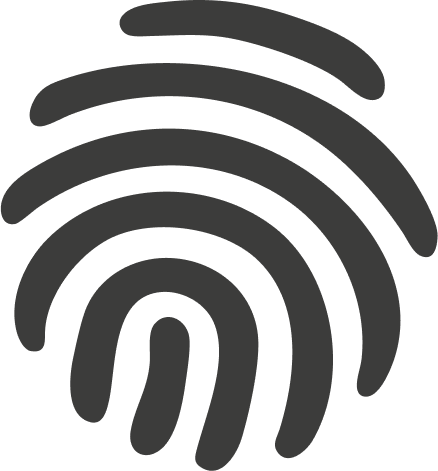
el yakisugi, también llamado shou sugi ban, es una técnica japonesa que quema
controladamente la superficie de la madera para crear una capa protectora
natural. esto aumenta la durabilidad y la resistencia a humedad, rayos uv, insectos
y hongos, además de aportar un acabado único.
sí. shou sugi ban es el nombre usado en occidente; en japón se dice yakisugi.
ambos se refieren a madera carbonizada para exteriores e interiores.
seguimos el método tradicional:
1. carbonizado: quemado controlado que forma la capa protectora.
2. cepillado: limpieza o suavizado según el acabado.
3. aceitado con aceites naturales: fija el color y aumenta la durabilidad
pino/abeto, alerce, termo-D y accoya en acabados cepillados o no cepillados.
también disponemos de una colección exclusiva de maderas premium; consultar
disponibilidad.
depende del clima y del uso:
● termo-D yakisugi: muy estable en climas con cambios bruscos de
temperatura.
● alerce yakisugi: muy resistente a la humedad; histórica en construcción
naval.
● pino/abeto yakisugi: gran relación peso–resistencia en climas secos o
templados.
● accoya yakisugi: máxima durabilidad del mercado.
con mantenimiento mínimo (limpiar polvo y re-aceitar con aceites naturales si se
desea mantener el color), el yakisugi ofrece 50–100 años de vida útil. el color
evoluciona naturalmente hacia grises o marrones según orientación y exposición.
sí. es segura, no tóxica y sin olor a humo tras el proceso de aceitado con aceites
naturales. es perfecta para paredes, techos y elementos decorativos
nuestros acabados alcanzan d-s2,d0 según normativa europea. la clasificación
final depende del acabado, del sistema completo de fachada y del proyecto.
● grosor: 20 mm (fachadas) y 28 mm (terrazas).
● anchos: 95, 120 y 145 mm.
● largos:
○ alerce: 3, 4, 5 y 6 m (fijos).
○ pino/abeto y termo-D: 3–6 m en incrementos de 30 cm.
○ accoya: consultar disponibilidad.
en fachadas, terrazas, vallas, revestimientos interiores y proyectos personalizados.
sí, especialmente en acabados cepillados. el aceitado con aceites naturales ayuda
a mantener textura y color. cerca de piscina, conviene consultar la recomendación
de cepillado
sí. es una excelente solución para vallas exteriores: alerce y madera termotratada
ofrecen la mejor resistencia a humedad y pudrición; pino/abeto funciona muy
bien en climas secos o templados. para zonas marinas o proyectos premium,
accoya aporta la máxima durabilidad (consultar disponibilidad).
como cualquier revestimiento macizo de exterior: fachada ventilada, fijaciones
visibles y accesibles. la colocación puede ser horizontal, vertical o diagonal.
tornillos o clavos inoxidables a2 o a4. rastreles a 40–60 cm (ejes) y 2 fijaciones por
apoyo.
el aceite natural fija el hollín en carbonizados profundos, estabiliza el color y
prolonga la protección uv.
sí, siempre que se coloque sobre fachada ventilada y siguiendo las
recomendaciones del sistema de fijación elegido. en el caso de madera
termotratada (thermo-d), este método es especialmente adecuado.
● fachadas sur: 5–10 años
● vallas: 3–8 años
● terrazas: 1–3 años
si se acepta el envejecimiento natural (patina a grises/marrones), el re-aceitado es
opcional.
tras la instalación y una limpieza con agua, el aceitado con aceites naturales evita
desprendimientos notables en uso normal.
sí, podemos aplicar tratamiento con retardante de fuego para proyectos que lo
requieran, cumpliendo la normativa vigente. con este tratamiento, la madera
puede alcanzar clasificación b-s1,d0 según normativa europea. la clasificación final
dependerá del sistema completo de fachada y de los materiales utilizados.
20 m² por referencia (por ancho/espesor).
sí, en toda europa. fuera de la ue, consultar condiciones y plazos.
sí, siempre que sean compatibles con yakisugi. consúltenos opciones de perfil,
cepillado y tono.
escriba a hola@zenwood.es o complete el formulario de contacto. actualizamos
precios cada trimestre.
sí. contamos con fsc™, ce, epd verified y iso 9001 / 14001 / 45001.
procedencia de bosques gestionados responsablemente.
no. solo fuego, cepillado y aceitado con aceites naturales, evitando químicos
nocivos.
sí. trabajamos con proveedores europeos y logística optimizada para reducir
emisiones.